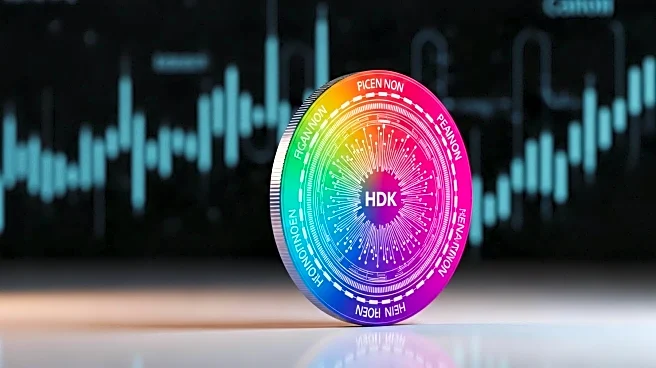What's Happening?
Hyperliquid has introduced a new stablecoin, USDH, backed by cash and U.S. Treasuries, to enhance its trading ecosystem. This launch comes as rival Aster surpasses Hyperliquid in weekly trading volume, creating competitive pressure. Additionally, Hyperliquid faces a significant $12 billion HYPE token unlock starting in November, which could lead to market volatility. The HYPE token has already seen a 20% decline in value over the past week, indicating potential challenges ahead.
Why It's Important?
The introduction of USDH by Hyperliquid is a strategic move to strengthen its market position amidst growing competition from Aster. The upcoming $12 billion HYPE token unlock could significantly impact the market, potentially leading to increased volatility and affecting investor sentiment. This development is crucial for stakeholders in the cryptocurrency market, as it may influence trading strategies and investment decisions. The rivalry between Hyperliquid and Aster highlights the dynamic nature of the crypto industry, where innovation and strategic maneuvers are key to maintaining market leadership.
What's Next?
As Hyperliquid prepares for the HYPE token unlock, market participants are likely to monitor the situation closely for signs of increased volatility. The company may implement measures such as buybacks to stabilize the token's value and strengthen its economic base. Meanwhile, Aster's continued growth in trading volume could prompt Hyperliquid to explore additional strategies to regain its competitive edge. Investors and traders will be watching for any shifts in market dynamics that could arise from these developments.
Beyond the Headlines
The rivalry between Hyperliquid and Aster underscores the competitive nature of the cryptocurrency market, where exchanges must continuously innovate to attract and retain users. The launch of USDH and the impending HYPE token unlock highlight the importance of strategic planning and risk management in navigating market challenges. These events may also influence broader trends in the crypto industry, such as the adoption of stablecoins and the impact of large token unlocks on market stability.










